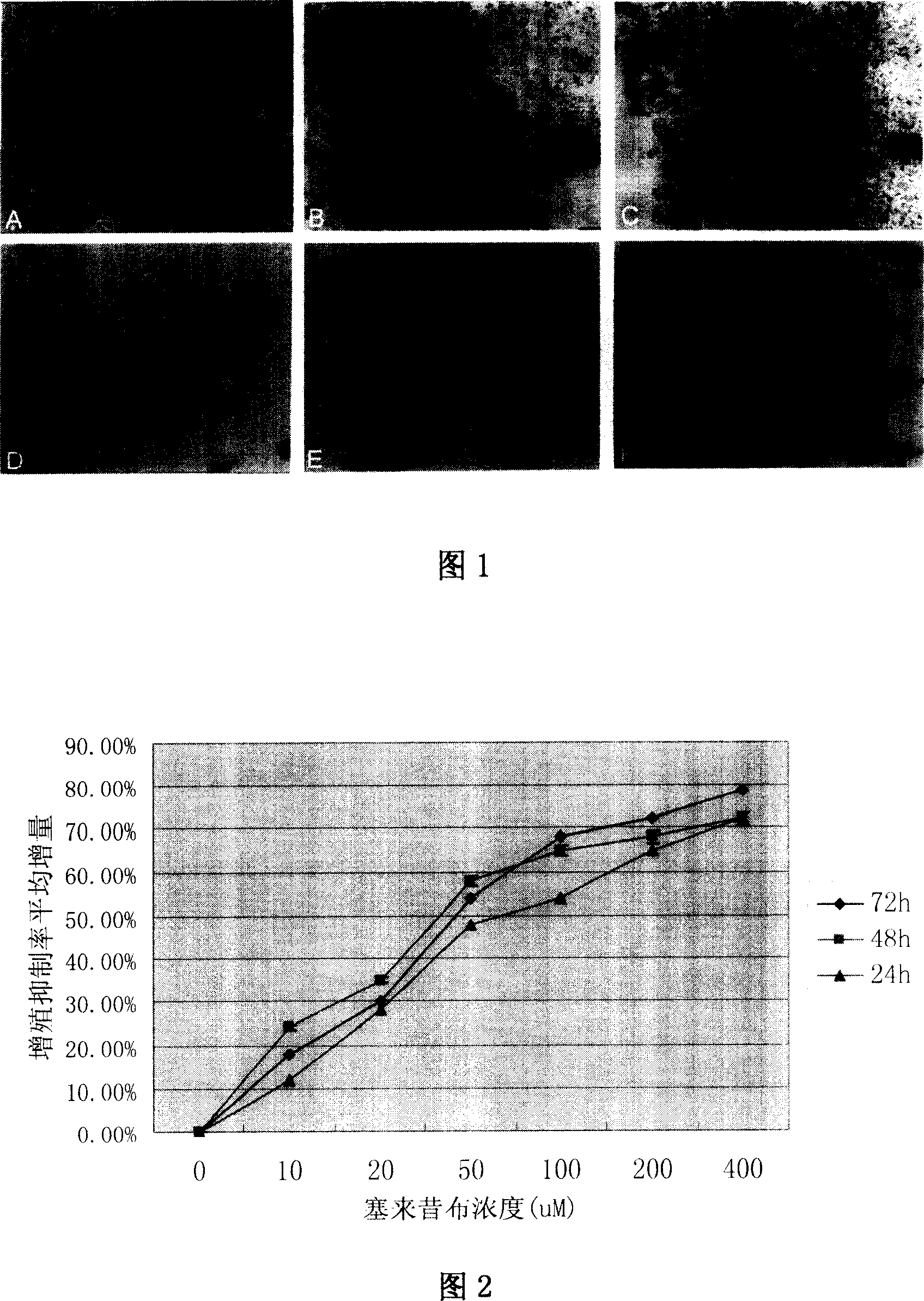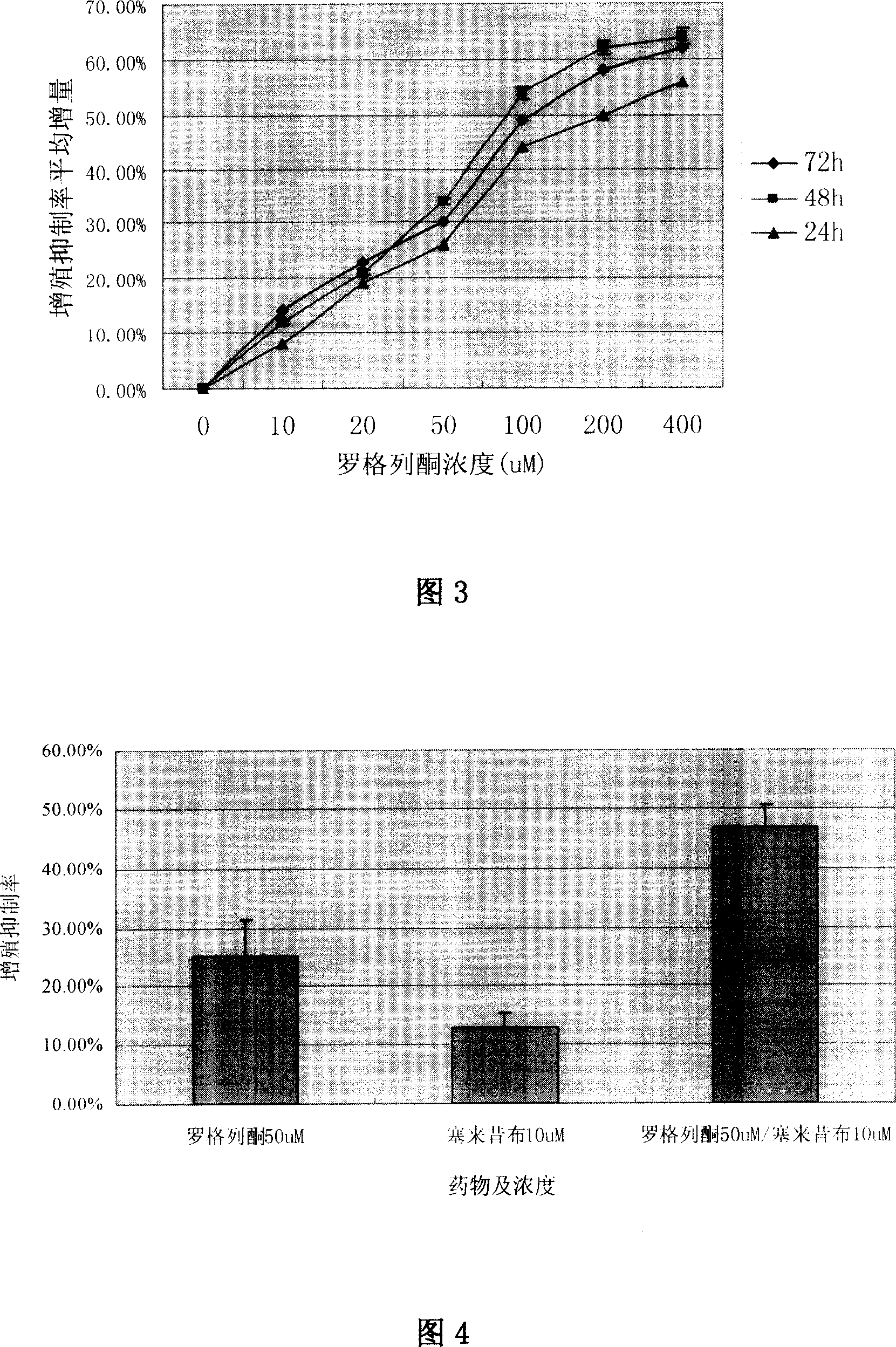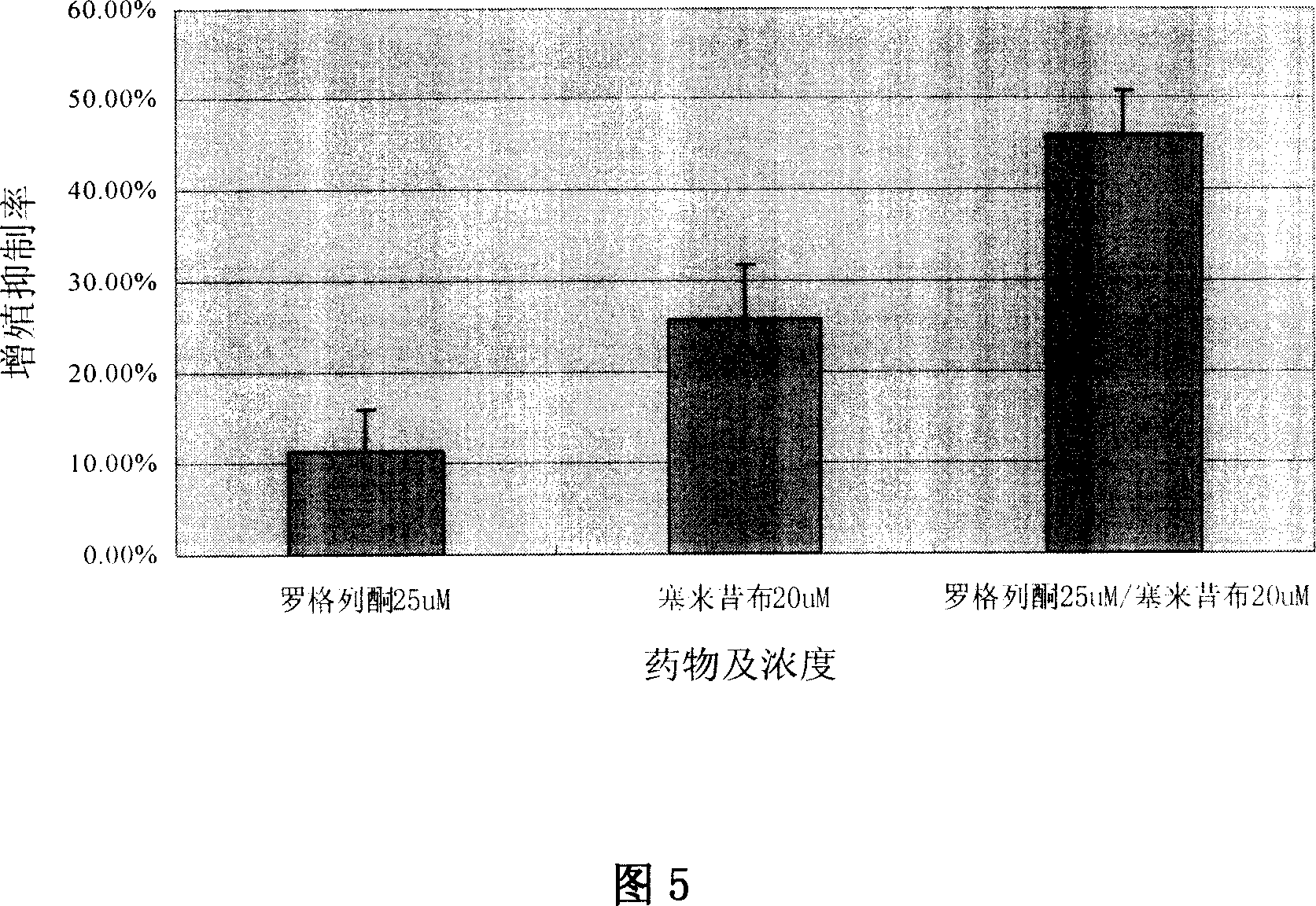Medicine composition for treating polycystic renal disease
A technology for polycystic kidney disease and composition, applied in the field of pharmaceutical compositions and their applications and pharmaceutical preparations containing the same, can solve problems such as unexplained polycystic kidney disease dosage and the like
- Summary
- Abstract
- Description
- Claims
- Application Information
AI Technical Summary
Problems solved by technology
Method used
Image
Examples
Embodiment 1
[0078] Example 1 Experimental study on the combined application of a certain concentration of rosiglitazone and celecoxib to inhibit the proliferation of cyst lining epithelial cells
[0079] 1. Experimental method
[0080] 1. Primary cultured human cyst lining epithelial cells, identified by immunohistochemistry and electron microscopy.
[0081] The specimens were obtained from nephrectomy polycystic kidney tissue. Cut the superficial and transparent vesicles, peel off the superficial fibrous membrane, and cut the vesicle wall into debris. After being digested with 0.1% collagenase for 1 hour, the cells were inoculated into culture flasks coated with rat tail collagen, and the culture medium was D-Valine modified MEM containing 20% fetal bovine serum. When cells are close to confluence, digest and passage. Inverted phase-contrast microscope observation. Immunohistochemistry and cell enzyme chemistry were used for cell identification, and electron microscopy was used to ...
Embodiment 2
[0091] Example 2 Comparison of curative effects of combination therapy of rosiglitazone and celecoxib in different concentrations.
[0092] 1. Experimental method
[0093] 1. The BrdU method was used to detect the inhibitory effect of the combination of rosiglitazone and celecoxib in different concentrations on the proliferation of cyst lining epithelial cells.
[0094] The method is the same as above, and the medicines are added according to the following schemes alone or in combination, respectively acting on the cyst lining epithelial cells for 48 hours. Six replicate wells were set up in each group, and the cell proliferation inhibition rate was calculated.
[0095] Single use group: rosiglitazone 25uM (11.84mg / L), rosiglitazone 50uM (23.67mg / L), rosiglitazone 100uM (47.35mg / L); celecoxib 10uM (3.81mg / L ), Celecoxib 20uM (7.62mg / L), Celecoxib 50uM (19.05mg / L).
[0096] Compatibility combination group:
[0097] Rosiglitazone 25uM / celecoxib 10uM (molar ratio 5:2, weight ra...
Embodiment 3
[0107] Example 3 Comparison of curative effects of other thiazolidinediones and COX-2 specific inhibitors in combination with different concentrations.
[0108] According to the method of Example 2, the combination of thiazolidinedione drugs troglitazone and pioglitazone and COX-2 specific inhibitors meloxicam and radicicol alone and in different concentrations were determined. The inhibitory rate of proliferation of cyst lining epithelial cells and the apoptosis rate of cyst lining epithelial cells. The results show that the combination of thiazolidinediones and COX-2 specific inhibitors at different concentrations can also significantly increase the inhibition rate of cyst lining epithelial cell proliferation compared with the two drugs alone, and can significantly promote cyst formation. Apoptosis of lining epithelial cells, with a marked synergistic effect.
PUM
 Login to View More
Login to View More Abstract
Description
Claims
Application Information
 Login to View More
Login to View More - R&D
- Intellectual Property
- Life Sciences
- Materials
- Tech Scout
- Unparalleled Data Quality
- Higher Quality Content
- 60% Fewer Hallucinations
Browse by: Latest US Patents, China's latest patents, Technical Efficacy Thesaurus, Application Domain, Technology Topic, Popular Technical Reports.
© 2025 PatSnap. All rights reserved.Legal|Privacy policy|Modern Slavery Act Transparency Statement|Sitemap|About US| Contact US: help@patsnap.com



